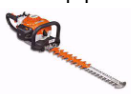This two-year program will introduce students to small engines, motorcycle and marine basics and the knowledge and skills required to service and repair small engines. Students will learn in a state-of-the-art lab on Toro mowers and Harley-Davidson motorcycles, and students will even have the opportunity to earn the highly regarded EETC 2-stroke and 4-stroke certifications. The course will also prepare students to service 2 and 4 stroke engines by providing in-depth knowledge of drive lines, hydraulics, hydrostatic transmissions and electrical systems. Students will have the opportunity to become power equipment certified by passing the Equipment and Engine Training Council (EETC) third party examination. The certification is recognized and accepted by the Small Engines industry.
Virginia Beach City Public Schools ensures equal access to all CTE courses. Accessibility accommodations will be provided as needed.
|
Unit |
The Nature of Technology  |
Outdoor Power Equipment and Society  |
Design and Engineering in Outdoor Power Equipment  |
Applying Design Processes in Outdoor Power Equipment  |
Select and Apply Technology in Outdoor Power Equipment  |
|
Focus |
Technology is a varied field of study. Students will examine the definition and applications of small internal-combustion engines. |
Technology is strong influence on society. Students will understand and describe the impacts of small internal-combustion engines. |
Resources are the raw materials of a technological system. Selecting and applying them toward a small engines solution is essential. |
Technology is a tool to assist in solving complex small engine related problems. A systems approach is a framework to design solutions. |
The role of technology is diverse. Identifying the role of technology in small engines is essential to an improved understanding. |
|
Transfer Goals |
|
|
|
|
|
|
Unit Learning Targets |
|
|
|
|
|
